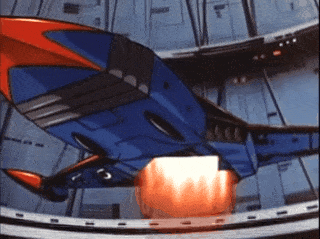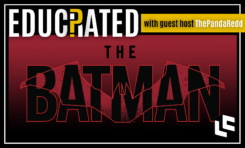It’s hard to believe now, with dozens if not hundreds of anime titles readily available to rent or stream. But once upon a time, Japanese animation was introduced to English-speaking audiences in short, sharp bursts. Subtitled anime was difficult to come by unless you imported PAL video tapes from Japan and had them converted. Meanwhile,when anime shows made it to U.S. screens they had title changes, completely new English dubs and often, significant plot changes.
By the 90’s, shows including Sailor Moon and Pokémon and acclaimed films like Akira began to open the floodgates to more and more exposure to anime of all sorts. If you grew up any earlier than that, chances are one of these crossover shows – up to and including 80’s titles like Robotech, which is featured in this month’s Loot Crate DX – sparked your interest in a whole new world of entertainment. Here are the key moments in our historical introduction to anime!:
Astro Boy
Original title: Mighty Atom
Originating on Japan’s Fuji-TV in 1963, Astro Boy marked the first animated series to “embody the aesthetic that later became familiar worldwide as anime”; it aired in the U.S. at various times in syndication through 1975. An atomic-age Pinocchio tale, the robotic Astro Boy learns life lessons from his scientist father/creator while protecting humanity with powers that include rocket flight, super-hearing and a machine gun… hidden inside his bottom. (Oh, Japan.) Astro Boy, fittingly, also marks the first time that a Japanese anime was censored for U.S. broadcast: The original series finale, in which Astro Boy sacrifices himself to save Earth Iron Giant-style, never aired in the States. (Clip: Fuji Television)
Original title: Tetsujin 28-go
Here he is, folks – arguably the precursor to every Autobot, jaeger and other giant robot to grace animated screens since. Also produced by Fred Ladd, who had a hand bringing Astro Boy to the U.S., Gigantor debuted in 1964 and was set in the far-off year of 2000 (!). Though impressive in might, Gigantor didn’t have much of a personality outside of whoever was controlling him remotely. That task fell to 12-year old protagonist Little Jimmy Sparks, who managed to maneuver the robot his father had originally developed as a weapon into a guardian of peace. It was immediately popular with kids, but not so much adults; one review called it “loud, violent, tasteless and cheerless.” Rude! (Clip: Peter Rodgers Organization)
Original Title: Mach GoGoGo
Could there be a catchier theme tune, with that keyboard hum that sounds like a revving engine? The first full-color foray into anime for Western audiences was the cheerful, fast-paced auto racing saga of a kid named Speed who is the most gifted driver of his generation. Along for the ride were his loved ones – his parents, girlfriend Trixie, brother Spritle and pet chimp Chim-Chim – as they navigate the racing circuit, frequently crossing paths with the mysterious Racer X who has a deep secret connection to the Racer family. The show had a brief resurgence thanks to the much-maligned film version by the Wachowskis in 2008. (Which isn’t actually that bad. Seriously. See it on Blu-Ray if you can, the production design is stunning!) (Clip: Funimation)
Battle of the Planets
Original Title: Science Ninja Team Gatchaman
Bursting onto the U.S. TV scene in 1978, Battle of the Planets took a then six-year-old action-packed show about five super-powered teenagers in dazzling bird-inspired costumes and gave it a Saturday morning-ready makeover. Some of this was rad, including the voice talent (the great Casey Kasem and Janet Waldo among them), and a classic theme tune. On the other hand, not-so-hot was the idea to add an irritating robot sidekick (7-Zark-7) in American-drawn sequences that were blatantly inferior to the original animation. Any real violence from the Gatchaman series was edited out – as were any references to the fact that villain Zoltar (Berg Kattse in the original series) was fused from fraternal male and female twins and constantly changed sexes (!!!) A live-action Gatchaman film was finally made in Japan in 2013. (Clip: Sentai Filmworks)
Voltron
Original Titles: Beast King Golion; Armored Fleet Dairugger XV
Probably the most beloved of the U.S. anime adaptations among Eighties babies, Voltron is a powerhouse of a franchise that is still going strong today with a new Netflix series that is pretty darned awesome in its own right. When it first debuted in the States, it captivated kids immediately with that opening monologue spoken by Optimus Prime himself, Peter Cullen. The epic smackdowns between the mechanical lion team of Voltron and the Robeast-of-the-week were appointment television for kids in 1984. Voltron‘s popularity was so swift that a similar Japanese series featuring a fighting robot comprised of 15 vehicles (land, sea and air squads) was dubbed and merged into a shared-universe narrative. “Vehicle Voltron” proved far less popular than the original team’s adventures. Go Lion or go home! (Writer’s note: Psst, actually I kind of liked Vehicle Voltron, and I’ll argue in favor of it ’til I’m blue in the face. But to each their own.?) (Clip: Dreamworks)
Robotech
Original Titles: The Super Dimension Fortress Macross; Super Dimension Cavalry Southern Cross; Genesis Climber MOSPEADA
Following on the template to construct larger story arcs from similar but otherwise unrelated Japanese anime, Robotech landed Stateside in 1985. It became an immediate hit with die-hard fans of all things mecha, who by this point had been given a taste for the genre by Voltron as well as home-grown shows like Transformers. The genius MacGuffin used to unite all of the original series into one dubbed epic is “robotechnology,” an advanced tech harvested from a crashed alien ship in the South Pacific which enables humans to build super-advanced robotic machines to fight back against further alien invasions across three generations. A feature film and numerous unproduced follow-ups and movies followed. (The Hollywood adaptation has had a craaaazy development hell curve.) (Clip: Harmony Gold)
Were any of these YOUR fave, or was another U.S. debut of an anime classic your jam? Let us know on social with the hashtag #ClassicAnimeDubs. And we included the original Japanese titles for a reason: ALL of them are awesome and worth your time, check them out!



